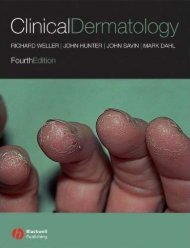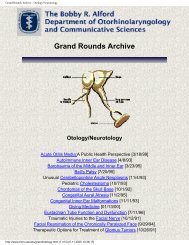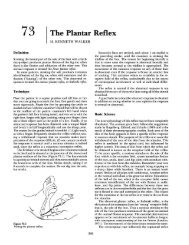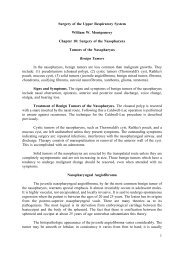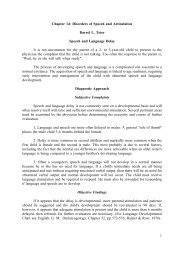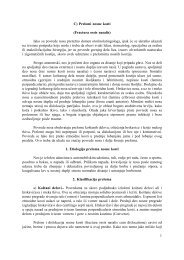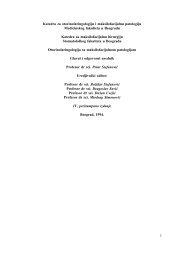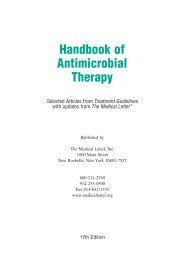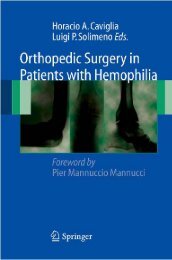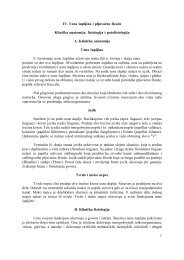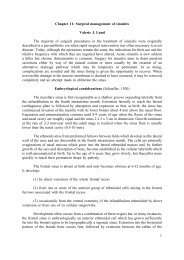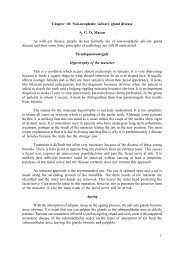1 Chapter 13: Acute suppurative otitis media and acute mastoiditis ...
1 Chapter 13: Acute suppurative otitis media and acute mastoiditis ...
1 Chapter 13: Acute suppurative otitis media and acute mastoiditis ...
You also want an ePaper? Increase the reach of your titles
YUMPU automatically turns print PDFs into web optimized ePapers that Google loves.
Simple incision <strong>and</strong> drainage of a postauricular abscess<br />
This condition occurs when pus spreads beyond the confines of the middle ear cleft<br />
<strong>and</strong> ruptures through the lateral surface of the mastoid process into the subperiosteal space.<br />
(This then would normally be an indication for cortical mastoidectomy since incision <strong>and</strong><br />
drainage alone may not be sufficient to enable the <strong>mastoiditis</strong> to resolve.) However in two<br />
circumstances simple incision of the abscess is indicated:<br />
(1) In infant, who may occasionally develop a postauricular abscess from a middle ear<br />
infection, but in whom the mastoid is not pneumatized nor the mastoid process developed.<br />
Particular care must be taken with the incision because of the superficial placing of the facial<br />
nerve (see Anatomy at the beginning of this chapter).<br />
(2) In any patient, of any age, judged too ill to sustain even the not very long<br />
procedure of cortical mastoidectomy, in whom time is of the essence <strong>and</strong> rapid evacuation of<br />
at least some pus is thought to be adequate for the time being. For such cases an even simpler<br />
alternative is needle aspiration.<br />
The procedure consists of a simple postauricular incision over the point of maximum<br />
fluctuation. When the pus is found a swab is taken, then as much pus as possible is sucked<br />
out. A small drainage tube is stitched in <strong>and</strong> the incision closed.<br />
Myringotomy<br />
Myringotomy alone is obviously not a sufficient form of surgery for <strong>acute</strong> <strong>mastoiditis</strong>,<br />
but in those few patients who require surgery, but in whom there has been no spontaneous<br />
perforation of the tympanic membrane, a myringotomy should be performed as well as other<br />
appropriate procedures.<br />
Surgical treatment of <strong>acute</strong> petrositis<br />
The indication is the presence of <strong>acute</strong> petrositis, perhaps with Gradenigo's syndrome,<br />
<strong>and</strong> failure to respond rapidly to medical treatment.<br />
The following account of the various approaches to the petrous cells used in the past,<br />
has been given by Mawson (1979). It is emphasized that such surgery would be exceptionally<br />
rare nowadays; it is difficult <strong>and</strong> hazardous, <strong>and</strong> should only be performed by those with very<br />
considerable familiarity with the field.<br />
Extrapetrosal drainage<br />
A cortical mastoidectomy operation is performed or reopened. Any fistulous tracks<br />
found must be followed. If necessary surgery must proceed to radical mastoidectomy. Tracks<br />
may then be found which lead towards the apex from the hypotympanum or attic.<br />
There are various routes for a deep exploration.<br />
24




